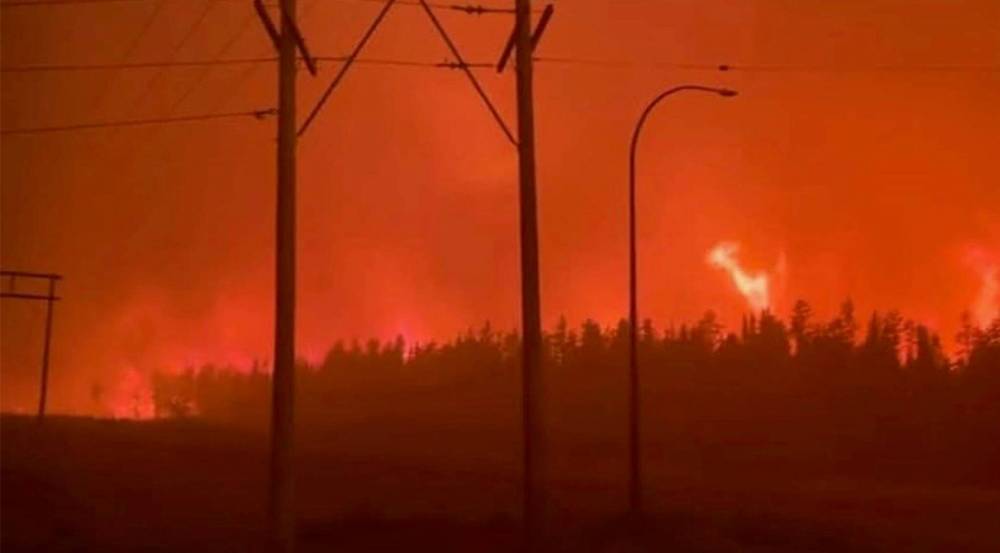Officials warn of winter zombie fires
Advertisement
Read this article for free:
or
Already have an account? Log in here »
We need your support!
Local journalism needs your support!
As we navigate through unprecedented times, our journalists are working harder than ever to bring you the latest local updates to keep you safe and informed.
Now, more than ever, we need your support.
Starting at $15.99 plus taxes every four weeks you can access your Brandon Sun online and full access to all content as it appears on our website.
Subscribe Nowor call circulation directly at (204) 727-0527.
Your pledge helps to ensure we provide the news that matters most to your community!
To continue reading, please subscribe:
Add Brandon Sun access to your Free Press subscription for only an additional
$1 for the first 4 weeks*
*Your next subscription payment will increase by $1.00 and you will be charged $20.00 plus GST for four weeks. After four weeks, your payment will increase to $24.00 plus GST every four weeks.
Read unlimited articles for free today:
or
Already have an account? Log in here »
WINNIPEG — Manitoba’s worst wildfire season in 30 years isn’t finished despite the onset of freezing temperatures and snow, and there’s a fear some blazes could smoulder underground and resurface next spring.
The Manitoba Wildfire Service’s latest situation report said 66 fires — mostly in the North and none posing a danger to communities — were still burning as of Sunday.
“To have this many active (in late November) is unusual,” said Mike Flannigan, a wildfire scientist at Thompson Rivers University in Kamloops, B.C. “Most of (them) will be smouldering. They’re not posing a threat other than the potential for some of them to survive through winter.”

A wildfire burns near Leaf Rapids in July. The Manitoba Wildfire Service's latest situation report said 66 fires were still burning as of Sunday. (Government of Manitoba)
The active fires were classified as under control or being monitored. Some are in areas that were blanketed by snow in October.
Colder temperatures and snow typically help to extinguish any remaining hot spots.
“The mild temperatures and limited precipitation will have slowed the natural extinguishing process,” a provincial spokesperson wrote in an email to the Winnipeg Free Press.
The spokesperson said a “decent” snowfall should extinguish many of the remaining fires, but it’s possible some may overwinter, particularly if they’re burning deep underground where moisture from rain and snow will have less of an impact.
The fires could flare up when conditions dry out in the spring, the spokesperson said.
They said the wildfire service will carefully monitor winter conditions to know which areas may be at higher risk in the spring and respond quickly if fires re-emerge.
The phenomenon of overwintering fires that burn underground — also known as zombie or holdover fires — has gained more attention recently due to dozens of examples in Alberta and B.C. The fires resurface when temperatures rise and snow melts.
“The bigger the fire, the more likely they will bump into these patches of deeper organic material, typically what we call peat,” Flannigan said.
An online map published by Agriculture and Agri-Food Canada shows areas of long-term drought in Manitoba.
“Wherever there has been a long-term drought, there is the potential for the fires to overwinter,” Flannigan said.
Three fires that began in May and forced temporary evacuations are still burning. The fires — near Lynn Lake, Nopiming Provincial Park and Pimicikamak Cree Nation — were classified as under control.
Some fires north of Thompson are still smouldering, Mayor Colleen Smook said. She is concerned some could burn underground all winter.
“That’s where we worry, if we don’t get much of a snowfall and they break out early next spring,” Smook said. “We’ll have to be very watchful next spring.”
The province said 433 wildfires have been detected this year.
Last week, the NDP government said an after-action review of the season will involve First Nations, Indigenous governments, municipalities and relevant organizations to help shape Manitoba’s response to future wildfires.
Environment and Climate Change Minister Mike Moyes’ expert advisory council will also conduct a review with recommendations on wildfire awareness and education, prevention and preparedness and air quality, the province said.
Flannigan said reviews can be valuable, but they must be conducted with accountability, and recommendations or lessons learned cannot be ignored.
“It’s not about the blame game,” he said. “It’s really about, how can we do things better in the future because we’re going to see more fires in the future?”
Flannigan was on an oversight committee during an external after-action review of the Northwest Territories government’s response to wildfires in 2023. A consultant’s final report proposed timelines for key recommendations to be implemented.
Manitobans have been treated to above seasonal weather in November, including record-setting temperatures Sunday afternoon, but cold Arctic air is set to sweep in.
Some southern areas were bracing for snow starting Monday night or this morning.
Winnipeg could see some flurries. The areas of greatest concern are along the Canada-U.S. border, where two to five centimetres of snow is possible, said Natalie Hasell, a warning preparedness meteorologist with Environment and Climate Change Canada.
Flurries were also possible in the North on Monday.
Daytime highs near -15 C and overnight lows of about -20 C are expected in southern Manitoba later this week. Highs of about -22 C and lows near -30 C are expected in the North.
“The clearer skies are going to help the temperatures fall,” Hasell said.
Sunday’s balmy weather helped 18 communities set new daytime highs for Nov. 23. The temperature climbed to 13.8 C at a weather station just south of Portage la Prairie, breaking a record (10.6 C) that had stood since 1890.
Carman, Morden, Pine Falls, Sprague, Winkler and Winnipeg broke records that were set in 1942.
» Winnipeg Free Press
